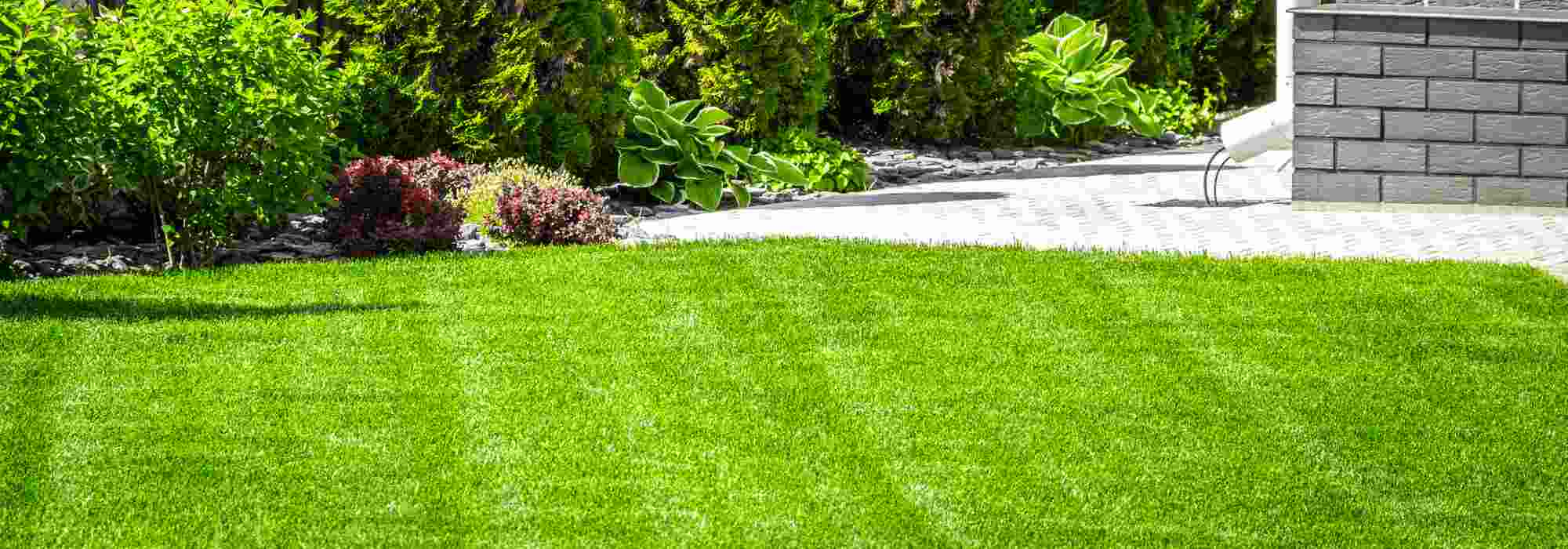
How to care for your lawn in spring?
All the steps for a perfect short grass meadow
Contents
To achieve a dense, green, and healthy short grass meadow, you need to start in spring! This is the season when we often repair minor lawn issues, giving it special attention. Even before thinking about the first mow, a thorough inspection is indeed essential. Granted, the first months of spring are busy in the garden, but don’t forget these few essential steps to maintain a beautiful, worthy short grass meadow throughout the year.
Rake for a thorough clean-up
The last dead leaves are scattered here and there across the short grass meadow in early spring. Either because you didn’t have time to rake everything at the end of autumn, or because some leaves blew away from the mulch.
It’s time to restore some order before mowing: remove dead leaves, clear away twigs and other debris accumulated during winter, and if necessary – if they bother you because you want an immaculate tapetum – hunt down dandelions or daisies that may have invaded certain areas, before they go to seed.
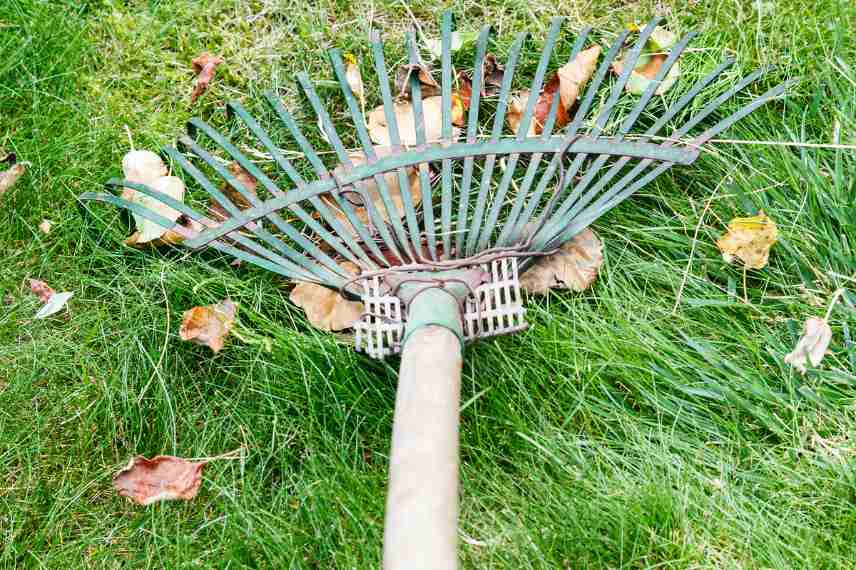
Read also
How to get rid of moss in the lawn?Mow from March onwards!
Here we are again, the mowing season is upon us… Several months of this time-consuming activity lie ahead, and we often have a few questions before getting started. Before you begin mowing, make sure your lawnmower has been serviced – this should normally be done during the winter months.
When to Start Mowing in Spring?
The grass is lush and beautifully green, just begging for a refreshing trim!
The first mow usually takes place in March, but it can be brought forward to February or delayed depending on the height of the last autumn cut and weather conditions.
When the lawn reaches about 10 cm in height, it’s time to bring out the mower. Keep an eye on the weather and wait for a completely sunny day to mow in the afternoon when the grass blades are dry. This will prevent clogging and avoid turning your lawn into a “soup” or leaving clumps of flattened grass.

What Cutting Height Should You Use?
For a lawn that grows rapidly in spring, it’s essential to start with a high cut, which usually means mowing in two stages. For the first mow of the year, set your mower to 7 cm, then lower it slightly for the second cut, between 3 and 4 cm, two or three days later. This prevents the mower from clogging.
There’s a growing recommendation to mow high, especially in summer, to reduce the effects of drought. In spring, unless the weather is unusual, there’s no need to worry, but keeping a higher cutting height also helps suppress adventive plants by reducing their exposure to light.
How Often Should You Mow in Spring?
From April to June, mowing is a very frequent task. It really depends on the level of aesthetics you’re aiming for. It also depends on the quality and type of lawn: a fine ornamental lawn requires weekly maintenance, while a hardier lawn can be mowed every ten days. The region and climate also play a role, as grass grows faster in rainy areas.
Finally, if you don’t want to become a slave to your mower and prefer to focus on biodiversity, you can mow much less frequently, leaving space for wildflowers that attract pollinators. From May onwards, you might consider leaving some areas unmown, shaping them into squares or triangles… a real boost for local wild flora.
→ Also read How Often Should You Mow the Lawn? and Differentiated Mowing.
How to Mow?
Spring is when the reborn lawn is arguably at its most beautiful. It’s the perfect time to restore its full splendour.
Here are the two most common mowing techniques:
- French Mowing: This method involves mowing the lawn uniformly in a single direction, often parallel to a reference point like a path or border. It’s simple to execute and works well for medium-sized gardens.
- English Mowing, for a more sophisticated lawn: You mow to create alternating stripes of dark and light green. This effect is achieved by changing the mowing direction with each stripe. The contrast comes from how light reflects off the grass blades, creating different shades. This technique is particularly popular for large lawns or English-style gardens where aesthetics matter.
If you’re comfortable and want to create patterns on your lawn, you could try spiral mowing, ideal around large trees, for example.
Aerate: spring scarification
Spring is the ideal time to aerate your lawn*, between March and April: this maintenance task that may seem unnecessary to some gardeners is actually quite important! It allows water, air and nutrients to penetrate the soil more effectively. It particularly helps compacted areas and those covered with thatch to regain some oxygen. Therefore, priority should be given to high-traffic areas.
Thatch, a mixture of plant debris, moss and dead roots, easily accumulates on the soil surface, especially if you practice “mulch” mowing. It needs addressing in spring as it can eventually suffocate the grass and prevent roots from breathing properly. Thatch also retains moisture, which can increase moss patches and sometimes lead to fungal diseases specific to grasses.
For this task, equip yourself with a scarifier – manual for small areas, electric or petrol-powered for larger ones – or alternatively, spiked sandals to attach to your shoes. These all serve as aerators. Regardless of the tool chosen, the key is to set the right penetration depth into the lawn, usually around 1 cm. Repeat the process by working perpendicular to previously treated areas.
For more details, check out our tutorials: How to scarify your lawn? and How to aerate your lawn step by step?
*Note: While this task can also be done in autumn, spring is the optimal time for scarification, as the grass in its growth phase will recover more quickly.
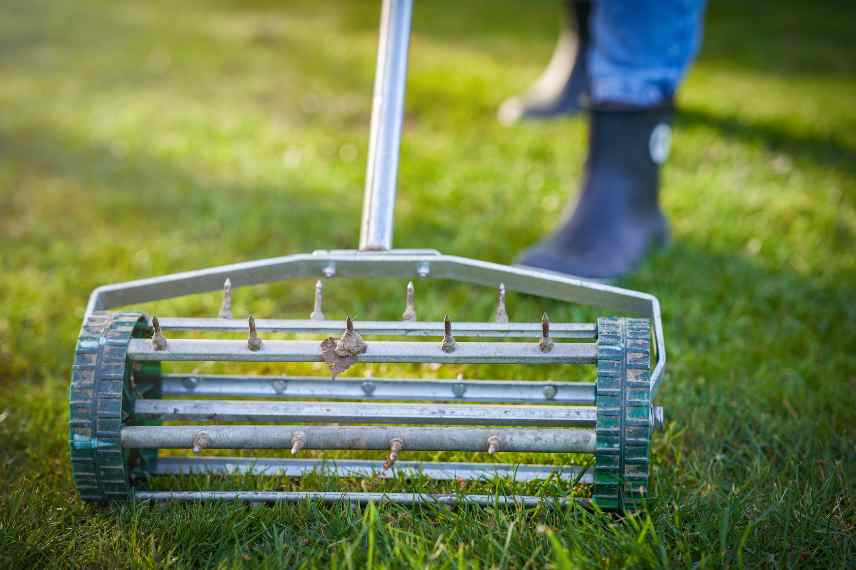
Reseed to fill in the gaps in your lawn
After aerating, especially with a scarifier, you may need to reseed damaged areas. The lawn may also have bare patches caused by pets, excessive foot traffic, or neglected gaps. It’s always best to sow or overseed a lawn in early autumn, but spring offers a second chance if you couldn’t do it earlier. The outdoor temperature should be at least 10 degrees, as with sowing, and you should work after mowing.
- Use an overseeding mix or, if unavailable, leftover lawn seed
- Lightly rake the soil
- Spread the seed by hand for small areas, or with a spreader for larger patches
- Water gently immediately after
- Keep the soil moist by watering with a fine spray until the young shoots appear (between 1 and 3 weeks, depending on the weather)
- Continue watering until the shoots reach the same level as the rest of the lawn.
→ For more details, see our guide: Overseeding a lawn: how to do it?
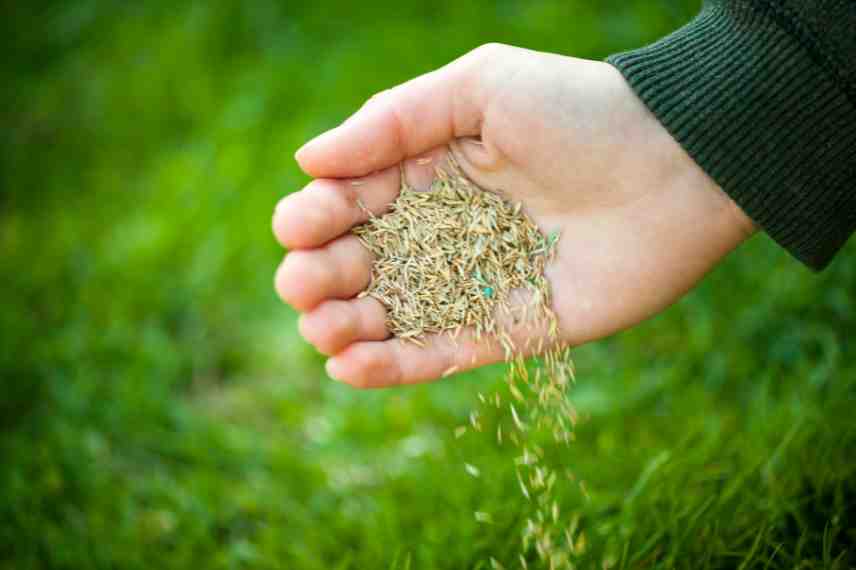
Boost your lawn by fertilising it
Final step of the spring makeover: we’ll boost the lawn by spreading some fertiliser. This step is optional, but proves invaluable for ageing lawns. It’s also a good technique to slow down the growth of “weeds” (by dosing correctly, otherwise we accentuate the problem!).
Prefer to fertilise by making a simple application of well-decomposed compost or good-quality potting soil, in a thin layer of barely half a centimetre thick, to be spread with a rake. This will nourish a struggling lawn in the long term. You can also use an organic fertiliser specifically for lawns* from the shops, which comes in granule form, often rich in nitrogen and nutrients, for a very tired lawn.
Carry out between March and April, the day before a rainy day. Spread them just after mowing, on a day when the weather forecast predicts rain, by hand or using a lawn spreader. The water will carry the fertiliser into the soil.
* Some fertilisers enriched with cyanamide also reduce soil acidity (which causes moss to appear).
→ Also read Top-dressing a lawn: why and how?
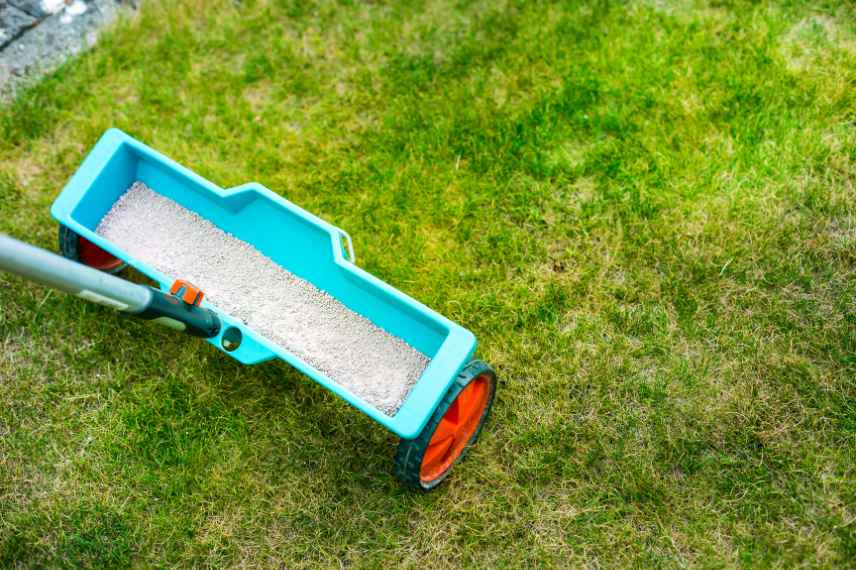
Perfect with edge trimming
Finally, early spring is also the perfect time to redefine and thicken up your lawn edges. This edging technique, a British speciality, is sometimes overlooked here, but it’s essential for perfecting the appearance of your lawn.
In March, as the grass comes back to life, bring out your edging iron or half-moon edger to create clean, precise lines around your flower beds, preventing the herb from encroaching onto borders. Create a shallow trench about 5 to 7 cm deep along the entire perimeter of the bed.
This task doesn’t just improve aesthetics; it also makes future maintenance easier by limiting weed invasion. For optimal results, carry out this task after the first mowing of the season. Your garden will gain elegance and definition, ready to welcome the warmer days.
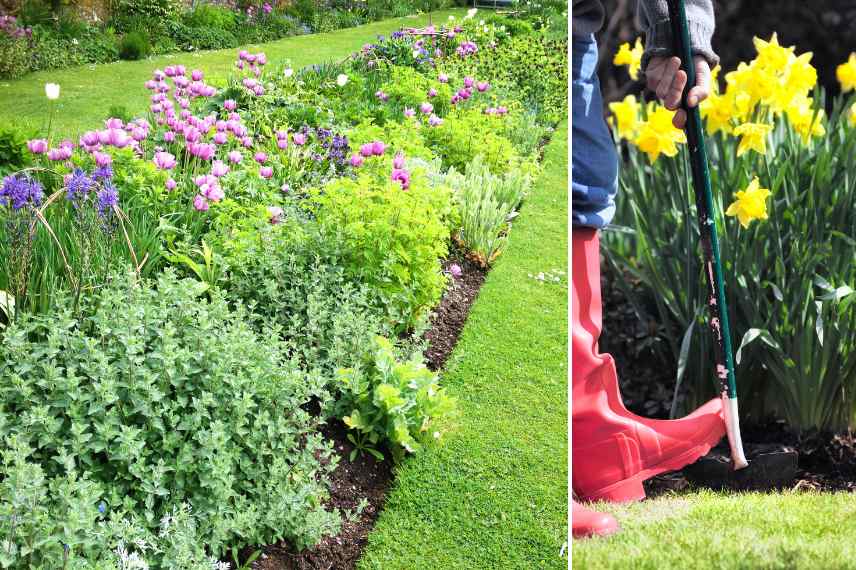
- Subscribe!
- Contents
































Comments